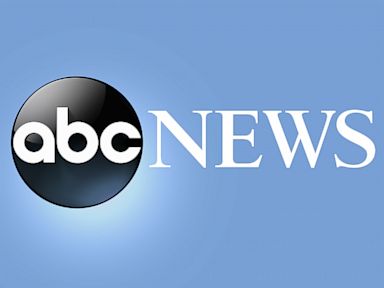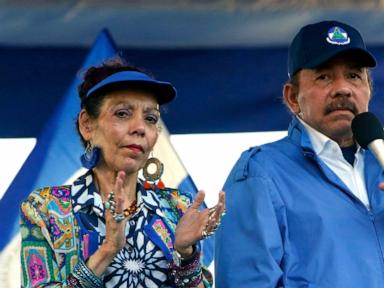ARTICLE AD BOX
PARIS — To many Parisians, swimming in the Seine sounds icky.
But starting Saturday, taking a dip in the famed river while enjoying a view of the Eiffel Tower will officially become possible.
For years, the notoriously skeptical Parisian public was unconvinced that the estimated €1.4 billion project was worth it, especially as authorities struggled to keep the water clean during the Olympics last summer. Paris Mayor Anne Hidalgo, however, is not one to let critics or pessimists get in the way of her plan to transform the French capital from a polluted megacity into an oasis of urban sustainability.
Making the Seine swimmable is one of the final major projects Hidalgo will inaugurate before she leaves office next year. She will depart having overseen one of the most drastic makeovers Paris has undergone since the mid-19th century, when Napoleon III and Georges-Eugène Haussmann ripped up what was a fetid medieval city and laid the groundwork for Paris as it is today.
A walk around the city makes clear just how much has changed since Hidalgo took office in 2014: The Seine riverbanks are no longer high-speed roads but instead pedestrian-friendly areas with parks, walkways and cultural spaces. Close to 130,000 trees have been planted on Paris’s streets since 2020 to help create new green spaces, like the 4,000-square-meter area in the formerly cement-heavy, car-centric Place de la Catalogne office district. The famed Place de la Concorde — once a busy intersection — now features palm trees and plenty of walking space.
Hidalgo’s unabashed embrace of these policies has earned her glowing plaudits from left-leaning mayors across the globe.
Former Los Angeles Mayor Eric Garcetti — now the C40 Cities network’s ambassador for Global Climate Diplomacy — calls Hidalgo the “Joan of Arc of climate change.” Milan Mayor Giuseppe Sala says his Parisian counterpart “inspired” him to make his city greener during the pandemic. And Utrecht Mayor Sharon Dijksma, who spoke to POLITICO during a global summit of mayors to discuss the role of cities in fighting climate change, described Hidalgo’s work as the epitome of “political courage.”
But Hidalgo’s zealous commitment to sustainability has made her a deeply divisive figure, and it played a large part in her dismal performance in the 2022 presidential election. She scored just 1.7 percent of the vote despite being the capital city’s mayor and representing the Socialists — one of the country’s historically most popular parties.
A future in French politics looks bleak, as do any succession plans Hidalgo may have had. Opposition parties are gearing up for a shot at taking Paris back from the Socialists, and the party itself has chosen Emmanuel Grégoire — Hidalgo’s former heir-apparent with whom she had a falling out and now refuses to campaign for — as its candidate for the 2026 race.
But while Hidalgo’s political legacy may be murky, her imprint on the city is set in stone.
Red light for cars
Since the Parisian mayor was first elected in 2014, the core tenant of her politics has been to reduce — if not altogether remove — the presence of cars in the city.
Authorities have closed off roads in front of schools; expanded sidewalks at the expense of street width; hiked parking fees for SUVs; banned through traffic to central portions of the city; and cut the speed limit on the French capital’s ring road, the Boulevard Périphérique, from 70 to 50 kilometers per hour.
 Paris Mayor Anne Hidalgo is not one to let critics or pessimists get in the way of her plan to transform the French capital from a polluted megacity into an oasis of urban sustainability. | Teresa Suarez/EPA-EFE
Paris Mayor Anne Hidalgo is not one to let critics or pessimists get in the way of her plan to transform the French capital from a polluted megacity into an oasis of urban sustainability. | Teresa Suarez/EPA-EFEAirparif, a nonprofit that monitors Paris’s air quality, said in an April report that “since 2005, the levels of the two main harmful air pollutants — fine particles (PM2.5) and nitrogen dioxide (NO₂) — have gone down by 55% and 50% respectively.” The city’s official figures also show that the reduced speed limits have made Paris quieter with fewer accidents.
According to Canadian urbanist Brent Toderian, such policies can actually end up being a net positive for drivers — despite criticism that Hidalgo’s policies do not consider people living outside city limits, who traditionally earn lower incomes, commute daily and rely on their cars.
“The transformations that Paris made work better for everyone, including drivers,” Toderian said. “When everyone was trying to drive … it was still a city where, if you made the mistake of getting into a vehicle anywhere near the center of the city, you were stuck … For people who still need their cars for some things, if they can do short trips without the car, that frees up a lot of space.”
Paris-based urbanist Carlos Moreno, who worked with Hidalgo, underlined that the city’s transformation meant more than just making it eco-friendly, and that increasing proximity meant “developing the economy and reinforcing local social life.”
The future
Hidalgo won her 2020 reelection campaign by doubling down on a green Paris and embracing Moreno’s concept of the “15-minute city,” where all daily amenities are accessible via a short walk or bike ride.
As the campaign to succeed her heats up, Hidalgo’s changes to Paris appear safe, with more Parisians growing attached to them despite the green backlash making waves in national politics across Europe and in Brussels. She even took something of a victory lap via an exhibition at Paris City Hall marking the 10-year anniversary of the 2015 Paris climate accord, which effectively showed off the changes made during her tenure.
On the political side, Hidalgo also spearheaded legislation that constrains her eventual successor from reversing her policies and long-term goals, such as the creation of 55 acres of new green areas by 2040, and requiring at least 65 percent on any piece of land bigger than 150 square meters remains soil or plants, with no building or paving allowed.
Voters unhappy with the city’s changes are likely to coalesce around the center-right options that will be on the ballot next spring. On the other hand, progressive voters could opt for candidates further to the left, who embrace campaigning on the housing and cost-of-living concerns that dogged Hidalgo’s time in office — much like Zohran Mamdani did to win the Democratic primary for New York City mayor.
For Hidalgo’s Socialists, meanwhile, the mayoral race will prove challenging. The party is deeply divided and prone to infighting, and a recent survey by pollster Elabe showed support for the Socialists has dipped.
Hidalgo’s imprint on Paris is sure to last, as is her international reputation as a transformative politician. But when it comes to local politics, an era may be coming to an end.
.png)
 2 months ago
8
2 months ago
8








 English (US)
English (US)